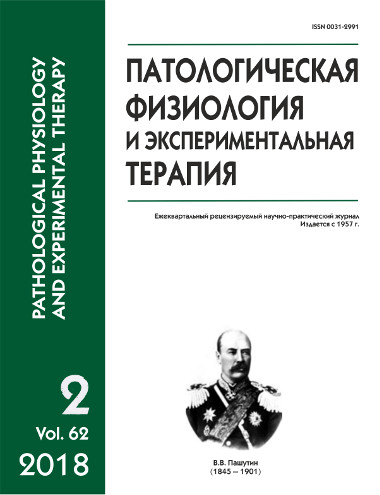Гипогликемические свойства пектина из тыквы (Сucurbita maxima d.) при аллоксан-индуцированном сахарном диабете
DOI:
https://doi.org/10.25557/0031-2991.2018.02.82-89Ключевые слова:
активные формы кислорода, аллоксан-индуцированный сахарный диабет, тыквенный пектин, фруктозамин, холестеринАннотация
Биохимическим маркером сахарного диабета и его тяжелейших осложнений является гипергликемия. В качестве новых средств растительного происхождения, обладающих гипогликемической активностью, в настоящее время рассматривают пектины. Цель исследования — оценка функциональных свойств пектина, полученного из тыквенного жома с использованием кавитационно-мембранной технологии. Методика. Использована модель аллоксан-индуцированного сахарного диабета. Эксперимент проводили на крысах — самцах Wistar (инъекции раствора аллоксана моногидрата из расчета 43 мг/кг массы). Развитие диабета подтверждалось уровнем глюкозы (>Загрузки
Опубликован
2018-06-01
Выпуск
Раздел
Оригинальные исследования
Как цитировать
[1]
2018. Гипогликемические свойства пектина из тыквы (Сucurbita maxima d.) при аллоксан-индуцированном сахарном диабете. Патологическая физиология и экспериментальная терапия. 62, 2 (Jun. 2018), 82–89. DOI:https://doi.org/10.25557/0031-2991.2018.02.82-89.













